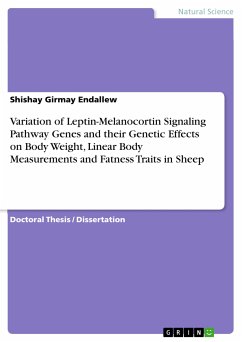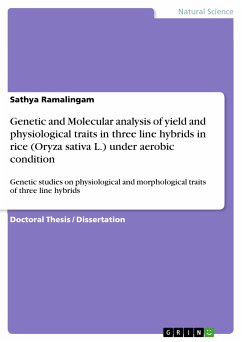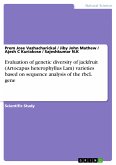Seminar paper from the year 2020 in the subject Biology - Genetics / Gene Technology, grade: 4.81, University of Lagos, course: Experimental Genetics, language: English, abstract: Cowpea (Vigna unguiculata) is a tropical grain legume widely distributed in sub-Saharan Africa, Asia, Central and South America as well as parts of southern Europe and the United States (Singh et al., 2002). Domestication of cowpea is presumed to have occurred in Africa given the exclusive presence of wild cowpea (Steele, 1976) although knowledge about the general region or regions of origin and number of domestication events within Africa is fragmented (Ng and Padulosi, 1988; Coulibaly et al., 2002). It is very important, widely adapted, and versatile grain legume of high nutritional value. Cowpea is mainly produced and consumed in Africa, where it provides a major low-cost dietary protein for millions of smallholder farmers and consumers, who cannot afford high protein foods, such as fish and meat. The seed protein content is reported to range from 23-32% of seed weight and therefore is often referred to as a “poor man’s meat” (Diouf and Hilu, 2005). In many parts of West Africa, cowpea hay is also critical as livestock feed, especially during the dry season (Wests and Francis, 1982). Being a legume, cowpea is nitrogen-fixing (Sanginga, 2003) and fits perfectly in the traditional intercropping systems that are common in Africa, especially given its ability to tolerate shade. The total area under cowpea cultivation is more than 12.5 million hectares worldwide, with an annual production of around 4.5 million metric tons (Singh et al., 2002).







